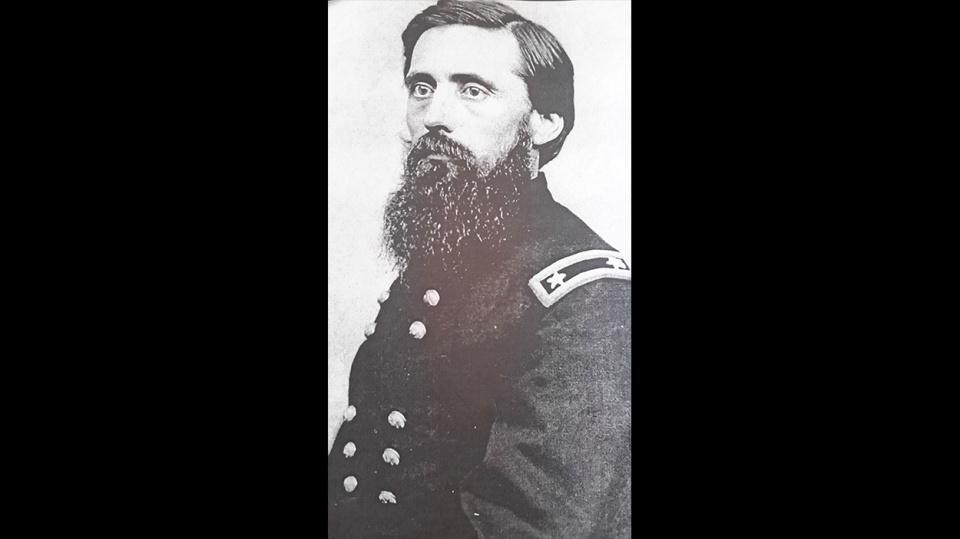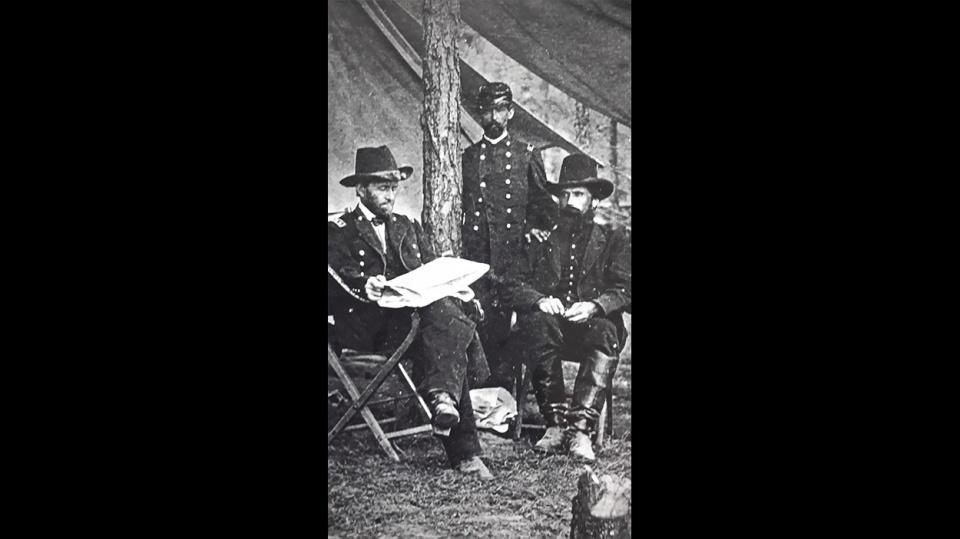The only native Galenian of the “Galena Generals” was Brigadier General John Aaron Rawlins, born in East Galena in 1831. When Rawlins was three the family moved to Guilford, Illinois, several miles east of Galena. His father, James, worked as a farmer and later made a living burning charcoal for the lead smelters. His young son, John, assisted him with the business. Later in life, this occupation earned John the nicknamed the “Coal Boy General.”
During the Gold Rush, Rawlin’s father migrated to California in 1849 and stayed there for three years. During this time, John, age 13, was left in charge of supporting his mother and eight siblings. In contrast to his father’s behavior, John developed a strong sense of responsibility and a powerful aversion to alcohol.
John attended local schools, as well as the Rock River Seminary at Mount Morris, Illinois. He began studying law in the early 1850’s and was admitted to the bar in 1854. Rawlins formed a partnership with a Galena attorney by the name of Isaac Stevens. When Stevens retired in 1855, Rawlins took over the practice.
Rawlins married Emily Smith in June of 1856. She was the niece of Bradner and Mary Smith of Galena. Soon after the marriage, they established residency at 517 Hill Street. They had three children. (The house is pointed out on the West Side Tour.)
Rawlins was an eloquent speaker and in 1857, while he was in his twenties, he served as City Attorney. The following year, he formed a partnership with another attorney by the name of David Sheean. (You will learn more about him on the East Side Tour.) It was during this time that Rawlins became active in politics. He was a Democrat and was quite successful at public speaking and debates.
During the political campaign of 1860, he was the Presidential Elector on the Stephen Douglas ticket.
Following the attack on Fort Sumter, Rawlins attended the first war meeting held at the courthouse in Galena. When called upon to speak, he came forward and gave a patriotic speech filled with Union sentiments. He urged the people of Galena to support the Union.
Upon reentering the army, Ulysses Grant who was greatly impressed by Rawlins passionate Union speeches asked him to join his staff. Rawlins soon became Grant’s adjutant and, in Grant’s own words, his “most nearly indispensable” man. Officially, Rawlins’s duties included issuing orders, reports, correspondence, and military advice. Unofficially, his most valuable war effort was his self-appointed role as Grant’s conscience. Because of his temperance views, Rawlins completely abstained from alcohol, and took great pains to keep Grant from drinking. A devoted friend to Grant, Rawlins also offered constant support and companionship as he zealously promoted Grant’s reputation. (Pictured in the photos are Rawlins with Grant at City Point, Virginia and also at City Point he is shown with his wife and son.)
By the end of the war, Rawlins was showing signs of tuberculosis. He was appointed Chief of Staff, and despite his health problems, he continued to serve General Grant faithfully. In March of 1865, Rawlins was appointed army Brigadier General. He was also appointed Major General for Meritorious services which terminated with the surrender of General Lee on April 9, 1865.
In 1867 he journeyed to Wyoming for health reasons. He accompanied the Dodge Expedition which mapped the future route of the Trans Continental Rail Road. Apparently Rawlins made quite an impression, as both a Wyoming spring and a Wyoming town were named after him.
When Grant became president, Rawlins resigned from the army, and in 1869 was appointed Secretary of War. At age of 38, he was the youngest man ever to have held this post. He served as Secretary of War for only six months before he died of tuberculosis in September 6, 1869. He is buried at Arlington National Cemetery in Virginia.



